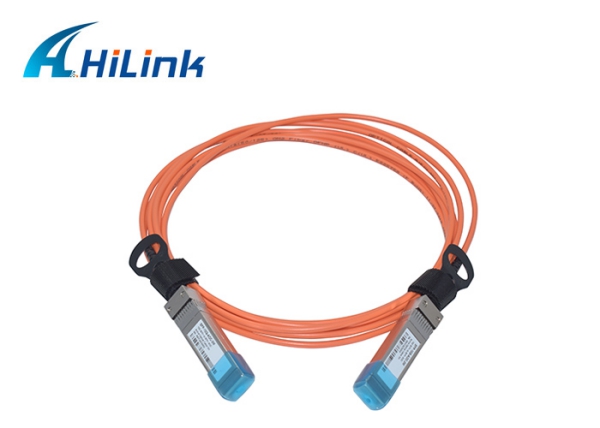The global data volume has exploded and entered the era of high-speed optical interconnection. It has driven the development of the data center and high-performance supercomputer center (HPC) markets with storage, high-speed routers, and supercomputing as the core. Active optical cable products are one of the main interconnection methods between these core devices.
The active optical cable is also called optical cable with chip. It is a set of data communication interconnection systems composed of several optical transceivers and optical cable jumpers.
Active optical cable (AOC) = Optical Transceiver + Optical Cable Jumper
Active optical cables can be divided into three functional parts: light-emitting part, light-receiving part, and the control circuit.
There are two key processes in the AOC production process: chip mounting process and fiber coupling process, which are also the biggest technical difficulties. The chip mounting process adopted by AOC is the cutting-edge Flip-Chip process (also known as the flip-chip method), which is not only a chip interconnection technology but also an ideal chip bonding technology.

At both ends of the active optical cable (end A and end B), the data of end A is inputted with electrical signals, and the electrical signals are converted into optical signals with specific wavelengths through an EO Converter. The optical signals are input after being modulated and coupled To the optical cable; after the optical signal reaches the end B through the optical cable, the photoelectric detection device (OE Converter) detects the optical signal and then amplifies it, and the corresponding electrical signal is output from the B end. The B side and A side transmit symmetrically, and the reverse transmission principle is the same.
Traditional data center interconnections are mainly based on coaxial cables. AOC active optical cables have many significant advantages over interconnecting copper cables. Due to the non-exposed optical interface of AOC, compared with the interconnection system composed of independent components (optical transceiver module, optical fiber jumper), there is no problem of optical interface cleanness and contamination. The system stability and reliability are greatly improved, and the maintenance cost of the computer room is reduced.
Compared with copper cables, AOC has the following advantages:
Lower transmission power
Lighter: the weight is only one-fourth of the direct-connect copper cable, and the volume is about half of the copper cable
Better airflow and heat dissipation
Smaller cable bending radius
Longer transmission distance (can reach 100-300 meters)
Better bit error rate, BER can reach 10^-12
The lower degree of electromagnetic interference: Because optical fiber is a dielectric, it is not easily affected by electromagnetic interference
Larger bandwidth: No equipment upgrade is required, with throughput up to 400Gbps
The information is provided by optical fiber switch supplier.
Copyright:@2020-2021
Comments Please sign in or sign up to post.
0
0 of 500 characters used